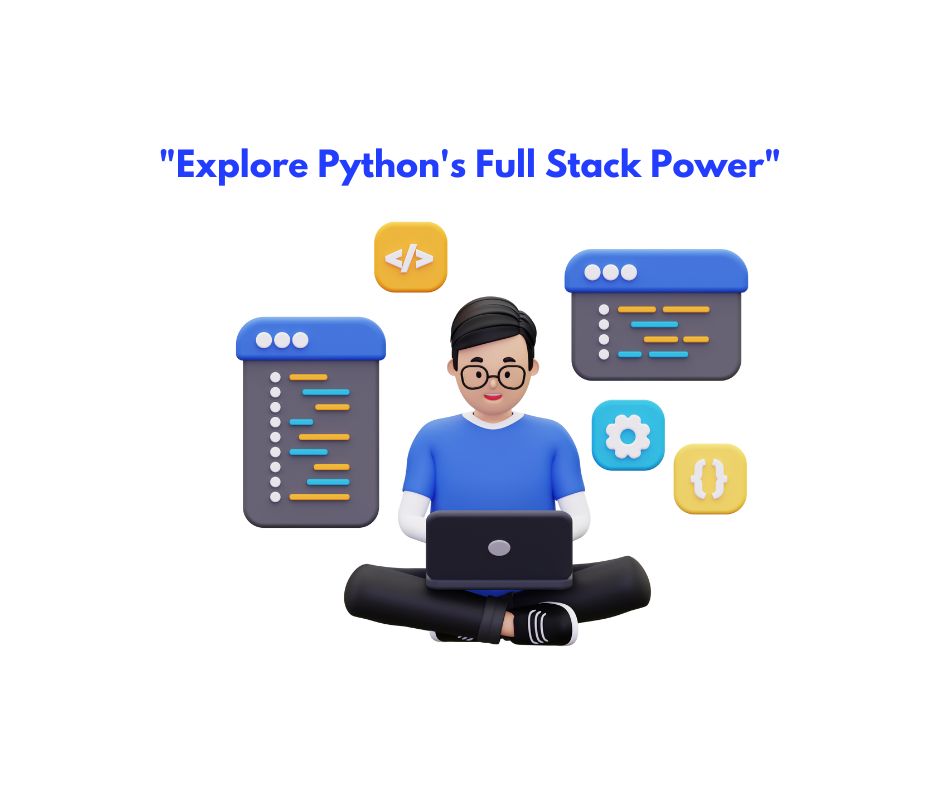“Explore Python’s Full Stack Power”

Why Use Python For Full-Stack Development?
Python is a versatile and high level programming language that is capable of making full stack applications. It has a simple, easy to learn syntax that makes it perfect for developers who want to get started quickly. Additionally, Python has a large library of libraries and packages that can be used for data science projects. Additionally, it is cross platform and can be used on desktop, mobile, and game development platforms. There are also a variety of useful frameworks available like Django Flask and Pyramid which make development with Python even easier.
Python is well suited for rapid prototyping as its code is easy to read and understand. Additionally, its code is portable across different operating systems making it ideal for developing cross-platform applications. Furthermore, the Python community is large and supportive, meaning that you will always have someone to help you when you need it most.
Understanding The Power Of Python To Make The Most Of Full-Stack Development.
Python is a powerful language that has been widely used in web development for a number of reasons. First and foremost, Python is preferred because it has a large and active community that can help you with any questions or problems that you encounter. Additionally, Python is an easy language to learn which makes it perfect for those just starting out in web development. The Python Full Stack Training in Hyderabad course by Kelly Technologies helps to build the skills needed to become an expert in this domain.
Understanding the full stack development capabilities of Python can help you accelerate your development process. For example, Python can be used to create the entire user interface (UI) for your web application using various frameworks and libraries. This allows you to focus on developing the core functionality of your application, without having to worry about the UI details. In addition, different modules in Python offer specific advantages when it comes to developing web applications. For example, NumPy offers significant advantages when working with data and scientific calculations, while Jinja2 offers powerful templating capabilities that make creating web applications easier and more efficient.
Finally, there are several reasons why Python is preferred for full stack development over other languages such as Java or JavaScript. For one thing, these languages are not as versatile when it comes to developing web applications – they tend to be better suited for certain tasks such as system administration or back-end programming rather than front-end development. Additionally, many developers find that they can achieve greater efficiency when working withPython due its well-defined syntaxes and well-established libraries and frameworks. As a result of all these factors – along with its widespread popularity –Python remains one of the most popular languages for full stack development today.
How To Harness Python For Front-End & Back-End Development
Python is a versatile and popular language that is used for both front-end and back-end development. In this section, we’ll introduce you to the key concepts of Python and discuss how it can be used for both web development tasks. We’ll also cover some of the most popular Python frameworks, libraries, and tools. By the end of this post, you will have a better understanding of how to use Python for your next web project.
Before getting started, it’s important to understand the key concepts of Python. This includes learning about variables, loops, functions, classes, inheritance and more. Once you have a foundational understanding of these concepts, you can begin to explore how to use Python for both front end and back end development tasks.
One popular framework that uses Python is Flask. Flask is a lightweight web development framework that makes it easy to create simple websites with minimal coding effort. Additionally, Flask supports routing so you can easily handle complex website architectures with ease.
In addition to being used for front end development tasks, Python can also be used for back end development tasks such as developing APIs or building robust systems from scratch. For example, NumPy provides powerful tools for data analysis while SciPy provides essential mathematical tools needed in scientific computing applications such as machine learning and deep learning algorithms.
Along with exploring new libraries and frameworks on your own accord, it’s important to learn best practices when developing with Python applications in order to get the most out of your codebase. This includes debugging techniques, testing strategies and ways to deploy your applications efficiently across various platforms. Last but not least – don’t forget about performance optimization! By following these tips when working withPython applications you will achieve optimal results while minimizing disruptions during busy periods or during live user interface interactions on the web..
Front-End Frameworks To Consider With Python
Python is a popular language for the development of websites, and there are many different frameworks that can be used to build websites with it. When choosing a framework, it’s important to consider your project needs and goals. Each framework has its own advantages and disadvantages, so it’s important to understand them before making a decision.
Here are four of the most popular Python frameworks: Flask, Django, Pyramid, and web2py. We’ll take a look at each one in detail and discuss its advantages and disadvantages. We’ll also cover some technologies that can be used with each framework – such as HTML/CSS/JavaScript – so that you have a better idea of which one would be the best fit for your project.
This article in the digitalcertainly must have given you a clear idea about Python full stacindustry. After reading this article, you should be able to make an informed decision about which Python front end framework is best for your next website project.





